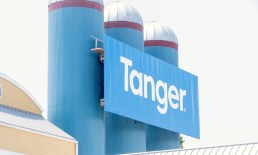As the unofficial start to summer, Memorial Day inspires many Americans to spend time with friends and family – and the extra day added to the weekend enables them to make a real trip out of it, which is why a total of 41.5 million are planning to head out of town over the next four days.
What better way to welcome summer than by sitting in hours of holiday traffic with the 36.6 million other Americans who are planning to drive to their holiday destination?
Actually, most people could think of a lot of better ways – which is why Waze wants to help consumers travel smarter through the power of data. The community-based traffic and navigation platform has crunched the numbers to determine the best and worst times to be on the road – and according to Ana Sofia Reis, global insights lead for Waze, they’re not what most consumers would expect.
In an interview with Karen Webster on Thursday (May 24), Reis said that travelers can reduce travel stress through a combination of planning ahead to avoid the worst of the traffic and leveraging real-time data from other users on the app throughout the long weekend. Here’s what travelers can expect.
The Best of Times, The Worst of Times
Reis said the worst times to drive will be Friday and Tuesday from 3:00 to 5:00 p.m. and Saturday through Monday from 12:00 to 2:00 p.m. The data brings a whole new meaning to “leave early” – as in, leave in the morning to avoid the worst congestion.
Advertisement: Scroll to Continue
“You’d think people would want to maximize time spent with friends and family on Monday and push their commute to later in the day, but they seem to be leaving mid-afternoon,” observed Webster.
Reis admitted she was also surprised by the data. “I would think the same way,” she said: “Go earlier to avoid the traffic at the end of the day. But everyone assumes that traffic will be worse later, so by trying to avoid it, they end up making more traffic in the middle of the day.”
She added that travelers who hoped to beat the system by delaying their homeward travels until Tuesday may be disappointed, as this has become a popular workaround in recent years.
“Tuesday from 3:00 to 5:00 p.m. will still be pretty bad,” Reis said. “Ironically, we all have the same fears, so we’re all on the road at the same time. The moral of the story is to enjoy that extra hot dog, stay another hour, and you’ll miss the traffic.”
Destinations
One might assume that everybody wants to spend the first weekend of “summer” outdoors, and it’s true that many do. Waze has seen a 140 percent increase in navigations to beaches in states that have good weather, as well as a 55 percent increase in navigations to parks and a 59 percent increase in trips to theme parks.
Visits to sporting goods stores also tend to spike on this weekend, added Reis, indicating that people are looking for fun activities to enjoy during their cookouts and other gatherings.
But there are a few less likely destinations that have proven almost as popular. Movie theaters, for instance, have seen a 133 percent increase in navigations over Memorial Day weekend – and it’s significant enough that Hollywood has strategically planned for several blockbusters to hit the big screens in the next few days. Navigations to shopping malls are also up by 40 percent, said Reis.
While Waze doesn’t poll consumers on their reasons for choosing certain holiday destinations over others, it’s likely that weather is one contributing factor. Whether it’s rainy outside, taking the fun out of barbecues and beach days, or hot and sticky, making consumers yearn for air conditioning, there are plenty of reasons that people may choose to spend time indoors on Memorial Day – including the simple possibility that they just don’t like the great outdoors all that much.
Logistics
The core value proposition for Waze is just-in-time intelligence that can help drivers make decisions en route, so the platform has ramped up its logistical offerings just in time for the holiday weekend.
Of course, drivers can already alert each other about accidents, roadwork and the best gas prices around, but that becomes even more valuable with 36.6 million on the road, traveling through unfamiliar territory.
For instance, noted Reis, drivers may not know the best detour for avoiding a traffic jam. Waze can help them find it. And with a long drive ahead or behind, consumers will certainly be looking to save on gas, which has spiked in price leading into Memorial Day weekend. An average price of $2.87 per gallon puts gas $0.53 higher than it was this weekend in 2017.
Finally, through a partnership with Allstate, Waze aims to be there for drivers not just when things get inconvenient (traffic jams), but when they go really, really south. Reis said drivers who need roadside assistance now have help at their fingertips via the Waze mobile app.
Whether consumers are driving near or far, Reis concluded, a data-driven approach to their travels can take at least some of the stress out of the holiday weekend – though when it comes to finding a spot to park their beach towel, celebrants are on their own.




